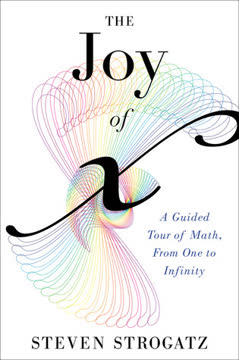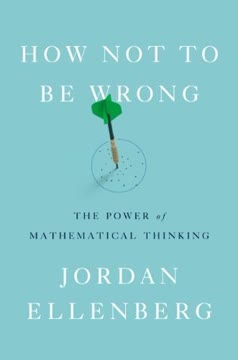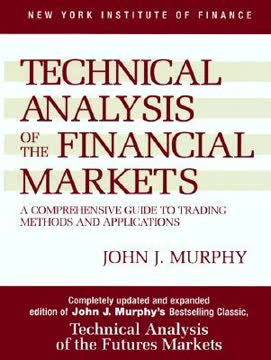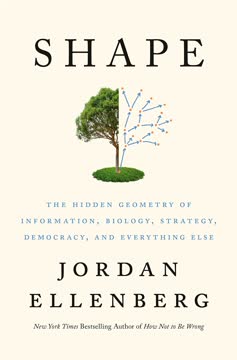가지 주요 요점
1. 수리적 문맹: 숫자를 다루지 못하는 광범위한 문제
"수리적 문맹, 즉 숫자와 확률의 기본 개념을 편안하게 다루지 못하는 능력 부족은 너무 많은 지식인들에게도 만연해 있다."
정의와 영향. 수리적 문맹은 기본적인 수학 개념, 특히 숫자와 확률을 이해하고 다루는 능력의 부족을 의미한다. 이 광범위한 문제는 잘 교육받은 사람들을 포함한 모든 계층의 사람들에게 영향을 미친다. 수리적 문맹의 결과는 단순한 산술 오류를 넘어선다:
- 개인 재정: 예산 관리, 대출 이해, 투자 기회 평가의 어려움
- 건강 결정: 의료 통계나 위험 요소의 오해
- 정치 참여: 수치 데이터를 기반으로 한 정책을 비판적으로 평가하지 못함
- 소비자 선택: 오해의 소지가 있는 광고나 사기에 속기 쉬움
문화적 수용. 다른 형태의 무지와 달리, 수리적 문맹은 종종 사회적으로 용인되며 심지어 자랑스럽게 여겨진다. 사람들은 수표를 맞추지 못하거나 기본적인 계산을 수행하지 못하는 것을 자랑스럽게 말하며, 수학적 기술이 학습된 것이 아니라 타고난 것이라는 오해를 강화한다.
2. 일상 생활에서의 추정과 정신 산수의 힘
"일반적인 큰 숫자에 대한 이해가 없으면 매년 백만 명 이상의 미국 아이들이 납치된다는 무서운 보고서에 적절한 회의감을 갖고 반응하거나, 메가톤의 폭발력을 가진 탄두—백만 톤(또는 20억 파운드)의 TNT에 해당하는—에 적절한 진지함을 갖고 반응하는 것이 불가능하다."
숫자 감각 개발. 추정하고 빠른 정신 계산을 수행하는 능력은 현대 세계를 탐색하는 데 필수적이다. 이 기술은 개인이 다음을 할 수 있게 한다:
- 주장과 통계의 타당성을 빠르게 평가
- 시간에 민감한 상황에서 정보에 입각한 결정 내리기
- 다양한 맥락에서 규모와 비율 이해
실용적인 기술. 추정 기술을 향상시키기 위해:
- 계산을 쉽게 하기 위해 숫자를 반올림
- 벤치마크와 비교 사용 (예: 국가의 인구, 도시 간 거리)
- 일상 생활 상황에서 정신 산수를 정기적으로 연습
이러한 기술을 연마함으로써 사람들은 정보의 비판적 소비자가 되고 개인 및 직업적 맥락에서 더 나은 결정을 내릴 수 있다.
3. 확률과 우연: 사건의 가능성 이해
"역설적인 결론은, 일어나지 않을 것 같은 사건이 일어나지 않는 것이 매우 드물다는 것이다."
확률의 직관에 반하는 특성. 많은 사람들이 확률을 이해하는 데 어려움을 겪어 사건의 가능성에 대한 오해를 낳는다. 이 오해는 다음과 같은 결과를 초래할 수 있다:
- 드문 하지만 극적인 사건에 대한 과잉 반응 (예: 테러 공격)
- 흔하지만 덜 알려진 위험에 대한 과소평가 (예: 자동차 사고)
- 겉보기에는 우연의 일치에 기반한 유사 과학적 주장에 대한 믿음
핵심 개념:
- 큰 수의 법칙: 표본 크기가 증가함에 따라 결과는 예상 확률에 수렴하는 경향이 있다
- 생일 문제: 23명의 그룹에서 두 사람이 생일을 공유할 확률은 50%이다
- 평균 회귀: 극단적인 결과는 더 평균적인 결과로 이어지는 경향이 있다
이러한 원칙을 이해하면 개인이 더 합리적인 결정을 내리고 겉보기에 불가능한 사건이나 패턴에 속지 않게 된다.
4. 유사 과학과 수리적 문맹의 관계
"사실, 오래된 수학을 적용하는 것이 새로운 수학을 발견하는 것보다 더 어렵다. 어떤 헛소리라도 컴퓨터화할 수 있다—점성술, 바이오리듬, 주역—하지만 그것이 헛소리를 더 유효하게 만들지는 않는다."
유사 과학의 매력. 수리적 문맹은 사람들이 복잡한 현상에 대한 간단한 설명을 제공하는 유사 과학적 믿음을 받아들이게 만든다. 일반적인 예로는 다음이 있다:
- 점성술과 별자리 운세
- 초능력 예측과 초감각적 지각(ESP)
- 과학적 증거가 없는 대체 의학
- 오해된 통계에 기반한 음모론
비판적 사고 기술. 유사 과학을 극복하기 위해:
- 반증 가능한 주장과 재현 가능한 결과를 찾기
- 상관관계와 인과관계의 차이를 이해하기
- 확인 편향과 같은 인지 편향을 인식하기
- 동료 검토된 과학적 출처를 찾기
이러한 기술을 개발함으로써 개인은 정당한 과학적 주장과 유사 과학적 헛소리를 구별할 수 있게 되어 다양한 측면에서 더 정보에 입각한 결정을 내릴 수 있다.
5. 수리적 문맹과 수학 불안의 심리적 뿌리
"수학 불안, Sheila Tobias가 수학 불안이라고 부르는 것. 그녀는 '수학 불안 극복하기'에서 많은 사람들이 (특히 여성들이) 산수조차도 포함한 모든 종류의 수학에 대해 가지는 차단을 설명한다."
수학 불안의 기원. 많은 요인이 수학 불안과 수리적 문맹의 발달에 기여한다:
- 수학과의 부정적인 초기 경험
- 수학이 본질적으로 어렵다는 문화적 태도
- 수학에서 누가 뛰어날 수 있는지에 대한 고정관념 (예: 성별 편견)
- 개념 이해보다는 암기 위주의 교육
정신적 장벽 극복. 수학 불안을 해결하기 위한 전략은 다음을 포함한다:
- 수학을 추상적인 학문이 아니라 문제 해결 도구로 재구성하기
- 수학 개념의 실제 응용에 집중하기
- 복잡한 문제를 더 작고 관리 가능한 단계로 나누기
- 지원적인 학습 환경과 자원을 찾기
수학적 이해에 대한 심리적 장벽을 해결함으로써 개인은 자신의 능력에 대한 자신감을 키우고 수리적 문맹을 극복할 수 있다.
6. 통계, 상충 관계, 사회적 의사 결정
"공짜 점심은 없으며, 설령 있다 하더라도 소화불량에 대한 보장은 없다."
정책에서의 통계의 역할. 통계적 문해력은 개인 및 사회적 수준에서 정보에 입각한 결정을 내리는 데 필수적이다. 주요 개념은 다음을 포함한다:
- 여론 조사와 설문 조사에서 오차 범위와 신뢰 구간 이해
- 표본 크기와 선택 편향의 중요성 인식
- 정책 결정에 내재된 상충 관계 평가
경쟁하는 이익의 균형. 많은 사회적 결정은 다양한 위험과 이익을 저울질하는 것을 포함한다:
- 공중 보건 조치 vs. 경제적 영향
- 환경 규제 vs. 산업 성장
- 개인의 프라이버시 vs. 집단의 안전
통계적 문해력을 향상시킴으로써 시민들은 민주적 과정에 더 잘 참여하고 다양한 정책 제안의 장단점을 평가할 수 있다.
7. 상관관계, 인과관계, 일반적인 통계적 실수
"상관관계와 인과관계는 두 가지 전혀 다른 단어이며, 수리적 문맹은 대부분의 사람들보다 그것을 혼동하기 쉽다."
상관관계와 인과관계 구별. 가장 흔한 통계적 오류 중 하나는 상관관계를 인과관계로 혼동하는 것이다. 이는 다음과 같은 결과를 초래할 수 있다:
- 원인과 결과의 잘못된 귀속
- 중요한 혼란 변수를 간과
- 데이터로부터 잘못된 결론 도출
오해의 예:
- 아이스크림 판매와 범죄율의 연관성 (둘 다 여름에 증가)
- 교육 수준이 직접적으로 높은 소득을 초래한다고 가정 (가족 배경, 직업 선택 등과 같은 요인을 무시)
일반적인 함정 피하기. 통계적 추론을 개선하기 위해:
- 대안 설명과 혼란 변수를 찾기
- 인과 관계의 방향 고려 (존재하는 경우)
- 선택 편향과 표본 오류 인식
- 관찰 연구와 통제 실험의 한계 이해
통계적 개념에 대한 더 미묘한 이해를 개발함으로써 개인은 데이터를 더 잘 해석하고 오해의 소지가 있는 결론을 피할 수 있다.
8. 현대 사회에서의 수리적 문해력의 중요성
"수학을 유용한 도구나 사고 방식 또는 즐거움의 원천으로 보는 개념은 대부분의 초등 교육 과정(교과서가 적절한 경우에도)에는 매우 낯선 개념이다."
수리적 문해력의 광범위한 영향. 수리적 문해력은 다음을 위해 필수적이다:
- 개인 재정 관리
- 많은 분야에서의 경력 발전
- 정보에 입각한 시민의식과 정치 참여
- 비판적 사고와 문제 해결 능력
수학 교육 개선. 사회적 수준에서 수리적 문맹을 해결하기 위해:
- 교육에서 수학의 실용적 응용 강조
- 문제 해결 및 추정 기술을 교육 과정에 통합
- 수학적 능력에 대한 성장 마인드셋 촉진
- 성인을 위한 수리적 기술 향상 자원 제공
수리적 문해력의 중요성을 인식하고 개인 및 사회적 수준에서 이를 개선하기 위한 조치를 취함으로써, 우리는 현대 세계의 복잡성을 더 잘 탐색할 수 있는 더 정보에 입각한, 비판적이며 유능한 인구를 만들 수 있다.
마지막 업데이트 날짜:
FAQ
What's "Innumeracy: Mathematical Illiteracy and Its Consequences" about?
- Overview: The book, written by John Allen Paulos, explores the widespread issue of innumeracy, which is the inability to comfortably deal with numbers and probabilities.
- Consequences: It discusses the real-world consequences of mathematical illiteracy, such as susceptibility to pseudoscience, poor decision-making, and misunderstanding of risks.
- Examples and Principles: Paulos uses a variety of examples, from stock-market scams to pseudoscientific beliefs, to illustrate how innumeracy affects individuals and society.
- Educational Insight: The book also delves into the educational system's role in perpetuating innumeracy and offers insights into improving mathematical literacy.
Why should I read "Innumeracy: Mathematical Illiteracy and Its Consequences"?
- Awareness: It raises awareness about the importance of mathematical literacy in everyday life and its impact on personal and societal decisions.
- Practical Applications: The book provides practical examples and applications of mathematical concepts, making it relevant for understanding real-world issues.
- Critical Thinking: It encourages critical thinking and skepticism, especially towards pseudoscientific claims and misleading statistics.
- Educational Value: For educators and students, it offers insights into how math education can be improved to combat innumeracy.
What are the key takeaways of "Innumeracy: Mathematical Illiteracy and Its Consequences"?
- Importance of Numeracy: Understanding numbers and probabilities is crucial for making informed decisions and avoiding manipulation.
- Role of Education: The book highlights the need for better math education to prevent innumeracy from an early age.
- Skepticism Towards Pseudoscience: It emphasizes the importance of skepticism and critical thinking in evaluating pseudoscientific claims.
- Understanding Risk: Paulos illustrates how innumeracy leads to poor risk assessment and decision-making.
What are the best quotes from "Innumeracy: Mathematical Illiteracy and Its Consequences" and what do they mean?
- "Mathematical solecisms... are a bit like piles of garbage; no matter how often they’re picked up, they soon collect again." This quote highlights the persistent nature of mathematical errors and misconceptions in society.
- "Innumeracy, an inability to deal comfortably with the fundamental notions of number and chance, plagues far too many otherwise knowledgeable citizens." It underscores the widespread issue of innumeracy among educated individuals.
- "The surprising likelihood of coincidence is illustrated by the following well-known result in probability." This quote introduces the concept of how people often misunderstand the frequency and significance of coincidences.
- "The approach throughout is gently mathematical, using some elementary ideas from probability and statistics." It reassures readers that the book is accessible and not overly technical.
How does John Allen Paulos define innumeracy in the book?
- Definition: Innumeracy is defined as the inability to comfortably deal with numbers and probabilities, similar to illiteracy but with numbers.
- Consequences: It leads to poor decision-making, susceptibility to pseudoscience, and misunderstanding of risks.
- Examples: Paulos provides examples such as misunderstanding probabilities in gambling or being misled by statistics in the media.
- Educational Aspect: The book discusses how the educational system often fails to address innumeracy effectively.
What examples does "Innumeracy" provide to illustrate mathematical illiteracy?
- Stock-Market Scams: The book describes how innumeracy can lead people to fall for financial scams due to a lack of understanding of probabilities.
- Pseudoscience Beliefs: It highlights how innumeracy makes individuals more susceptible to pseudoscientific claims, such as astrology and parapsychology.
- Misinterpretation of Statistics: Paulos uses examples like misinterpreting medical test results or crime statistics to show the consequences of innumeracy.
- Everyday Decisions: The book illustrates how innumeracy affects everyday decisions, such as assessing risks in travel or health.
What educational insights does "Innumeracy" offer?
- Early Education: The book emphasizes the importance of integrating math into early education to prevent innumeracy from developing.
- Teaching Methods: Paulos suggests using puzzles, games, and real-world problems to make math more engaging and relevant.
- Teacher Competence: It highlights the need for competent math teachers who can effectively communicate mathematical concepts.
- Curriculum Improvement: The book advocates for a curriculum that focuses on understanding when and how to apply mathematical operations, not just performing them.
How does "Innumeracy" address the relationship between innumeracy and pseudoscience?
- Susceptibility: Innumeracy makes individuals more susceptible to pseudoscientific claims because they lack the skills to critically evaluate them.
- Examples: The book discusses astrology, parapsychology, and other pseudosciences as areas where innumeracy leads to gullibility.
- Critical Thinking: Paulos emphasizes the need for critical thinking and skepticism to combat the influence of pseudoscience.
- Educational Role: The book suggests that better math education can help reduce belief in pseudoscience by fostering analytical skills.
What does "Innumeracy" say about the role of probability in everyday life?
- Understanding Risk: Probability is crucial for understanding and assessing risks in everyday decisions, from health to finance.
- Coincidences: The book explains how people often misinterpret coincidences due to a lack of understanding of probability.
- Decision-Making: Probability helps in making informed decisions by evaluating the likelihood of different outcomes.
- Educational Importance: Paulos argues for the inclusion of probability in education to improve numeracy and decision-making skills.
How does "Innumeracy" suggest improving math education?
- Engagement: Use engaging methods like puzzles and real-world problems to teach math concepts.
- Teacher Training: Improve teacher competence in math to ensure effective communication of concepts.
- Curriculum Focus: Focus on understanding when and how to apply math operations, not just performing them.
- Early Integration: Integrate math into early education to prevent innumeracy from developing.
What are some common misconceptions about mathematics addressed in "Innumeracy"?
- Cold and Impersonal: The book challenges the misconception that math is cold and impersonal, showing its relevance to real-world issues.
- Mechanical Nature: It refutes the idea that math is purely mechanical, highlighting its creative and problem-solving aspects.
- Depersonalization: Paulos argues against the belief that math depersonalizes, showing how it can enhance understanding of individuality.
- Limiting Freedom: The book addresses the misconception that math limits freedom, demonstrating how it empowers decision-making.
How does "Innumeracy" relate to societal issues and decision-making?
- Policy Decisions: Innumeracy affects policy decisions by leading to poor risk assessment and misunderstanding of trade-offs.
- Media Influence: The book discusses how innumeracy in the media can lead to sensationalism and misinformed public opinion.
- Economic Impact: It highlights the economic consequences of innumeracy, such as susceptibility to financial scams and poor investment decisions.
- Public Health: Paulos illustrates how innumeracy affects public health decisions, such as misinterpreting medical statistics and risks.
리뷰
수학적 문맹은 다양한 평가를 받는다. 많은 독자들은 수학적 문맹과 그 결과에 대한 탐구를 높이 평가하며, 저자의 확률, 통계, 큰 수에 대한 설명을 칭찬한다. 그러나 일부는 어조가 거만하다고 느끼고 예시가 시대에 뒤떨어졌다고 생각한다. 비평가들은 이 책이 깊이와 체계성이 부족하다고 주장하는 반면, 지지자들은 일상적인 수학 개념에 대한 통찰을 가치 있게 여긴다. 전반적으로 독자들은 수학적 소양의 중요성에 동의하지만, 이 책이 문제를 해결하는 데 얼마나 효과적인지에 대해서는 의견이 갈린다.
Similar Books

















